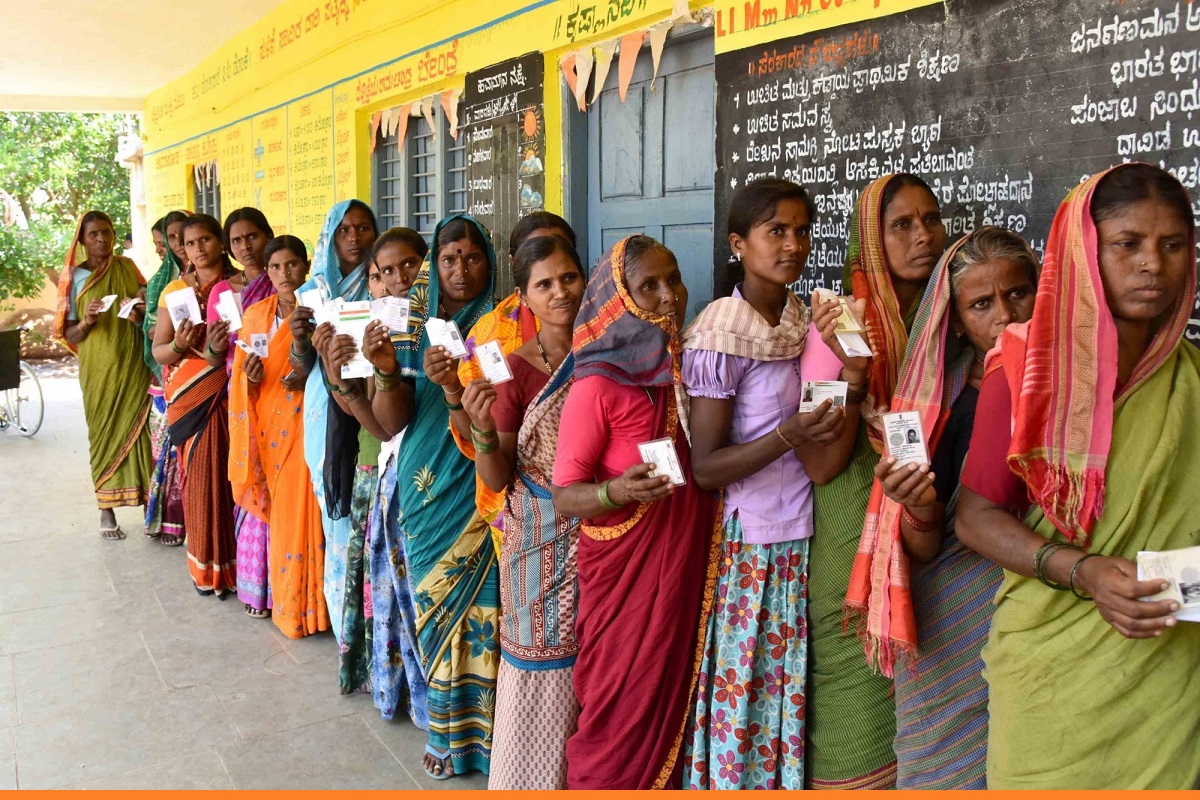Very happy to join campaign against obesity launched by PM Modi: CM Omar Abdullah
Jammu and Kashmir Chief Minister Omar Abdullah has expressed happiness in joining the campaign against obesity launched by Prime Minister Narendra Modi.
With a 70.02% turnout, women voters in the third phase of the J&K Assembly polls on 1 October outnumbered men, whose turnout was 69.37%, the Election Commission of India (ECI) said on Thursday.

Women voters (Photo: IANS)
With a 70.02% turnout, women voters in the third phase of the J&K Assembly polls on 1 October outnumbered men, whose turnout was 69.37%, the Election Commission of India (ECI) said on Thursday.
The ECI said that the overall polling percentage across all three phases was 63.88. The phase-wise polling percentages were 61.38, 57.31, and 69.69 in the 1st, 2nd and 3rd phases, respectively.
Advertisement
Women’s turnout in the first two phases of polling was less than that of men. In the first phase, the voting percentage of men was 63.75 against 58.96% for women.
Advertisement
In the second phase, 58.35% of men turned out to cast their vote against 56.22% of women.
The Marh (SC) constituency, where polling was held in the third phase, witnessed 81.47% voting, followed by 80.34% in the border constituency of Chhamb in the Jammu region. The lowest polling of 45.32% was recorded in north Kashmir’s Sopore which has remained a stronghold of pro-Pakistan separatist Syed Ali Shah Geelani.
Polling remained peaceful compared to previous elections. Despite an increase in the number of Assembly Constituencies (ACs) from 83 in 2014 to 90 in 2024, the elections were completed in three phases this time as against five phases in 2014. No major law and order incidents related to the election were reported, marking a significant improvement from 2014, when over 170 incidents were reported, including 87 on polling days, the ECI said.
Interestingly, women candidates made a significant leap, with their numbers rising from 28 in 2014 to 43 in this assembly election. Independent candidates also witnessed a 26% increase. Registered unrecognised political parties also demonstrated a remarkable 71% increase in participation, from 138 in 2014 to 236 in 2024. As a result, observers are keeping their fingers crossed for the final results on 8 October.
Following the delimitation exercise, 9 seats were reserved for Scheduled Tribes (ST) in J&K for the first time in history, resulting in a more inclusive and participative election.
Advertisement